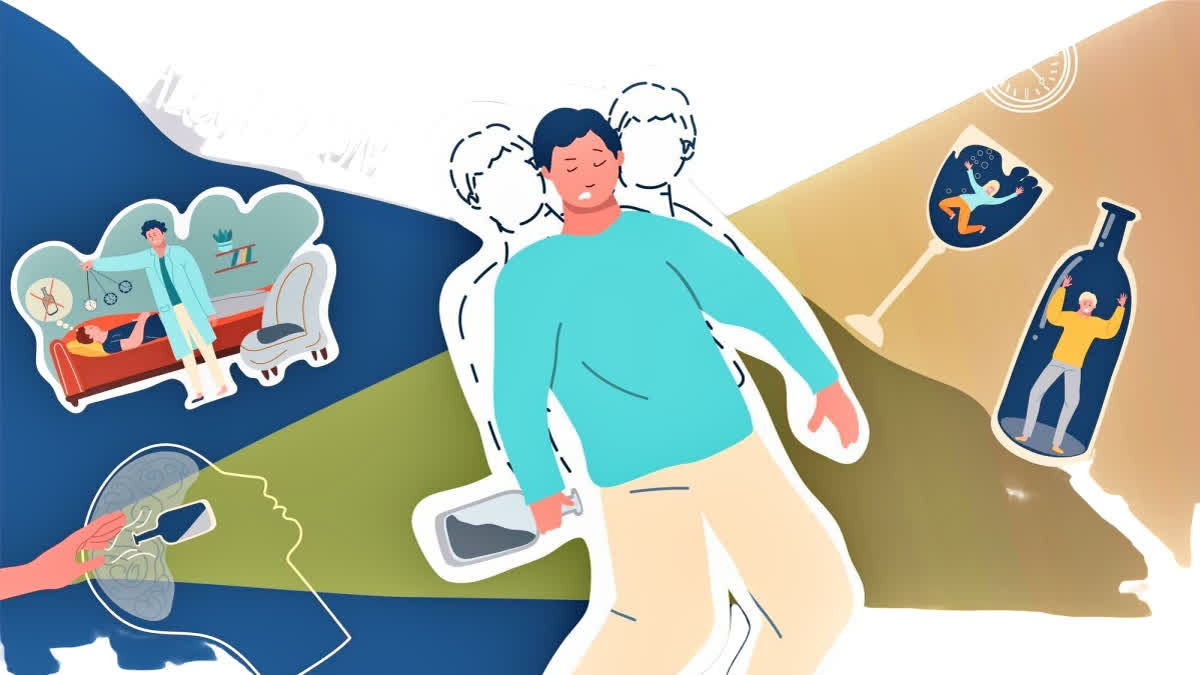What if a 15-minute psychedelic journey could cure an alcoholic? It sounds like the plot of a science fiction novel, but it’s happening right now in the real world, courtesy of researchers at University College London (UCL).
With the active ingredient in ayahuasca [dimethyltryptamine (DMT)] at its heart, this groundbreaking study is exploring whether a powerful, mind-bending substance could help people rein in their alcohol consumption.
DMT is no ordinary compound. Found in the Amazonian brew used in centuries-old shamanic rituals, it’s one of the most potent hallucinogens known to science. But in this study, it’s being wielded with surgical precision, aiming to rewire the brain’s reward circuits and tackle the root causes of excessive drinking.
Professor Ravi Das of UCL’s Clinical Psychopharmacology Unit says, “Excessive drinking is partly driven by alcohol hijacking the brain’s built-in motivation and reward system. We are seeking to counteract that with our treatment.”
How Does It Work?
Volunteers for this study receive a single intravenous dose of DMT, which provides a brief, intense psychedelic experience lasting just 15 minutes. Unlike its trippier cousins like LSD or psilocybin, DMT’s effects are remarkably short-lived, making it easier to administer in a controlled environment.

The process doesn’t stop with the psychedelic trip. Participants also engage in a targeted psychological intervention designed to help untangle their associations between alcohol and reward. Two MRI scans book-end the experience, during which participants watch a film, allowing researchers to observe any lasting changes in brain function. For good measure, an electroencephalography (EEG) scan during the session captures real-time brain activity while the drug is active.
Funded by Wellcome Leap, the study has an ambitious design. It includes 120 volunteers who drink regularly and want to cut back. These participants will receive either DMT, a placebo, or other active control drugs to compare the effects. Over the following nine months, researchers will assess their progress to determine how effective the intervention has been.
Why DMT?
The choice of DMT is no accident. “DMT has some interesting effects on the plasticity of our brains, so we hope it can help ‘rewrite’ the reward associations people have with alcohol,” says Professor Das. Neuroplasticity (the brain’s ability to rewire itself) is a critical component of breaking destructive habits. By altering how the brain processes motivation and reward, DMT might offer a powerful tool for reshaping behavior.
This isn’t UCL’s first foray into psychedelics and substance abuse. A previous study led by Professor Das demonstrated that a single dose of ketamine (when used strategically) could weaken the memories that link alcohol with pleasure. The results were promising, showing a significant reduction in cravings and drinking over nine months. However, DMT offers some distinct advantages: it’s safer, shorter-acting, and now paired with brain imaging to provide deeper insights.
Psychedelics Could Transform Mental Health
While psychedelics have been generating buzz in mental health research, there’s still much to learn about how they work.
Professor Jeremy Skipper, a co-lead on the study: “There’s a lot of research and excitement about psychedelics in mental health treatments, but not a lot of evidence about what exactly they do, and how they work. We’ve set up our study to answer these questions.”
By combining the psychedelic experience with rigorous brain imaging, the researchers hope to demystify how these substances impact the brain and pave the way for more effective treatments.
What’s Next?
The potential of psychedelics like DMT extends far beyond alcohol addiction. Early evidence suggests that these substances could also be useful in treating depression, smoking cessation, and opioid dependence.
With the insights gained from this study, researchers are hopeful that they’ll be one step closer to harnessing psychedelics as a safe, effective, and transformative tool in mental health care. For now, though, the focus remains on the volunteers undergoing this 15-minute journey.
Read more:



